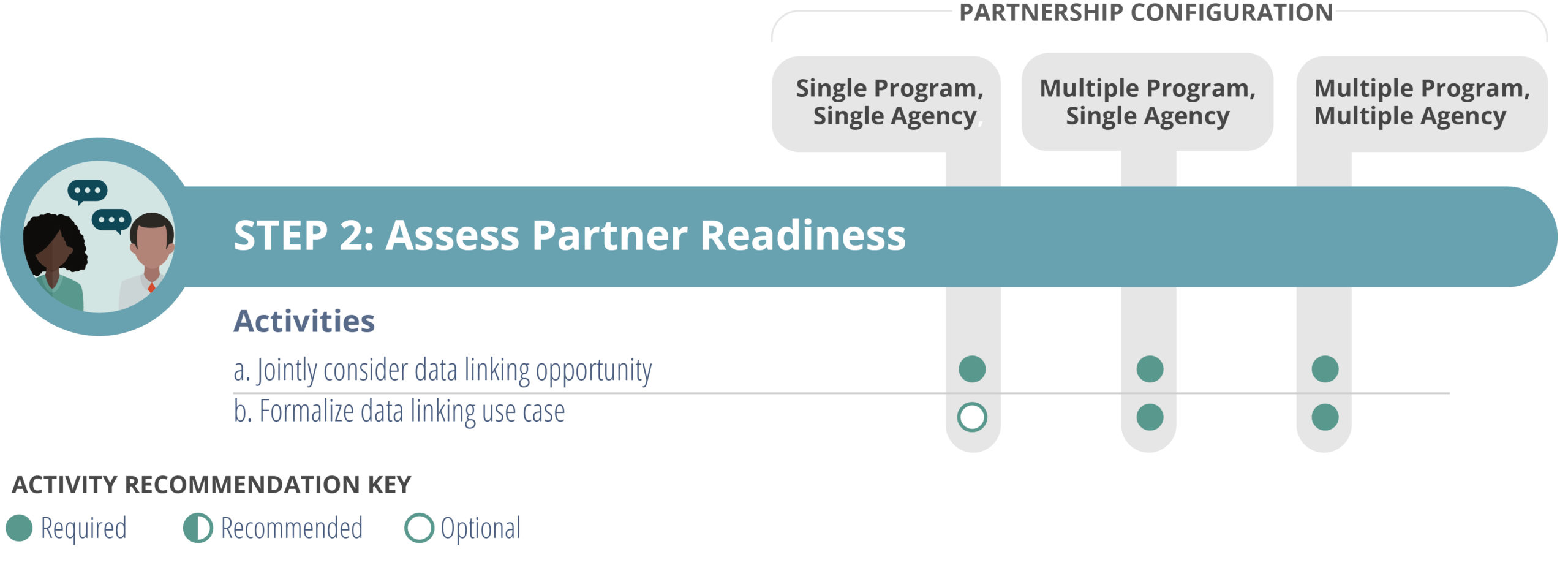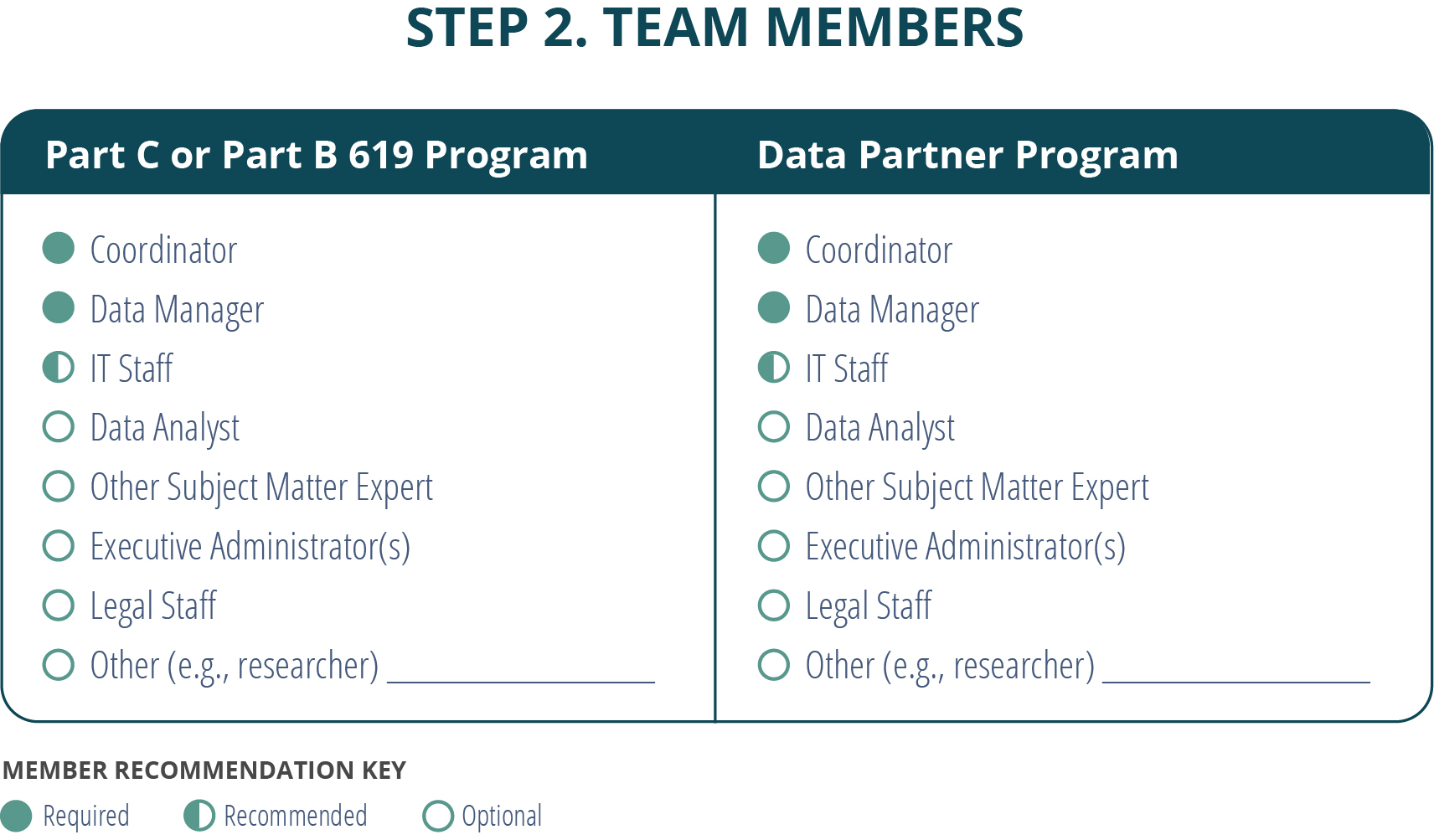| Steps to Data Linking | Step 1: Check Data | Step 2: Assess Partner Readiness | Step 3: Formalize Data Linking Partnership | Step 4: Link Data | Step 5: Analyze Data | Step 6: Sustain Data Linking |
|---|

In Step 2, data linking partners develop a high-level, mutual understanding of the work they will undertake. They also agree on how they will use the results. The table below displays the roles of team members potentially involved in Step 2 activities.

Assessing readiness to link data requires discussions between partners over one or more meetings. The two activities in this step—jointly considering the data linking opportunity and developing a data linking use case—are interrelated and can occur simultaneously.
Step 2 includes multiple tools:
- a worksheet with cross-program/agency data linking considerations,
- a data linking use case template, and
- a sample data linking use case.
While data linking partners may use these tools independently, Part C or Part B 619 program staff should contact DaSy for support if they want a facilitator or a neutral third party.
Activity 2a: Jointly consider data linking opportunity
A successful data linking partnership requires a common understanding of the intent, benefits, and parameters of the partnership. This includes each partner’s commitment to their respective data linking responsibilities and the joint data governance associated with the linked data. Together both partners must establish a common understanding of the intent, benefits, and parameters of the data linking partnership. Establishing this common understanding early and from both partners’ perspectives lays the groundwork for the linking effort.
Activity 2b: Formalize data linking use case
Single Agency Data Governance
Joint Agency Data Governance
Each data partner is responsible for governing their respective data within the parameters of their agency and in alignment with statutory requirements. Before linking data, the data partners must consider how they will work together to jointly govern the linked data to meet all legal requirements and effectively manage the data. Joint data governance is established through a data sharing agreement and operationalized through the data partnership management plan (see Step 3: Formalize Data Linking Partnership).
A data linking use case explains the overall reason or purpose for an upcoming activity. A data linking use case establishes why the two partners want to link their data. It includes the goals, impact, and benefits of data linking to build understanding across key staff. It also provides a necessary overview that will promote internal and, where applicable, external support for the data linking effort. A well-written use case:
- succinctly describes the problem and explains how analysis of the linked data will help address the problem;
- describes at a high level the data linking process, including the partners, specific roles and responsibilities, frequency of activities, sustainability, proposed timeline, etc.; and
- limits jargon and technical details so that critical stakeholders and potential champions of the data linking effort will understand at an appropriate level.
The data linking use case is drafted, reviewed, edited, and then approved by both data linking partners. The partners might formalize the data linking use case while they are initially considering the data linking opportunity. If few or no obstacles limit the data linking effort, the partners may quickly move from considering the data linking opportunity to developing the use case—possibly within the same meeting. On the other hand, if the partners identify issues that require further consideration before proceeding, they may not formalize the use case until after both partners have agreed in principle to pursue the data linking opportunity. Note that formalizing a data linking use case is usually not necessary when data sets within a single program are linked.
Published July 2022.

